Desi Women’s Experiences of Arthritis
Experiences of arthritis are a part of many Desi women’s realities worldwide.
Yet, this chronic illness remains one that is not potently discussed in Desi spaces.
Arthritis affects 15% of people (over 210 million) in India. This rate is higher than many well-known diseases like diabetes and cancer.
In 2019, The Times of India highlighted that research predicts that in the next decade or so:
“Arthritis will emerge as the fourth most common cause of physical disability in India.”
Based on anecdotal evidence, rheumatologists in the UK report that widespread pain is more common among clinic patients of South Asian origin.
In 2002, the first UK population-based study found chronic widespread pain was in excess among South Asians. Although there was little difference in the reports of regional pain syndromes.
Moreover, women are three times more likely to have rheumatoid arthritis than men.
In the popular imagination, experiences of arthritis are deemed to be a concern for the elderly.
However, this is not the case as arthritis is a condition that a person can get in their 30s and even earlier.
Alina Kapoor* is an Indian postgraduate student in Birmingham, until recently she saw arthritis as an “old people problem”. Now at 25, she thinks differently:
“I always thought that it was an old people problem, like super old people.
“Then my friend got it at 23 and it was like oh hell. No one ever said you could get it young, it freaked us out.”
The myth within Desi communities and more broadly, that arthritis is something that is a worry for the elderly needs to be removed.
DESIblitz explores the experiences of Desi women who endure the pain and consequences of arthritis every day.
What is Arthritis?
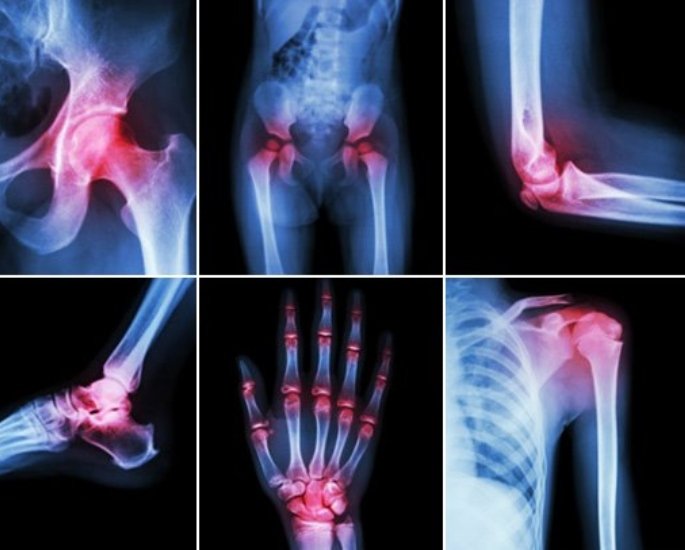

Arthritis is not a single illness but a group of over 100 types of joint diseases and related conditions.
Osteoarthritis and rheumatoid arthritis are the two most common types of arthritis. Other forms of arthritis include reactive arthritis, gout and psoriatic arthritis.
The symptoms of arthritis vary significantly and also depend on the type of arthritis a person has.
Symptoms can include:
- Joint pain, tenderness and stiffness
- Inflammation in and around the joints
- Reduced joint movement
- Weakness and muscle deterioration
- Chronic fatigue
The NHS stresses arthritis impacts, people of all ages, including children.
For example, in the UK approximately 15,000 children and young people are affected by arthritis.
An Invisible Disability/Illness
Arthritis can be viewed as an invisible disability and illness. Its symptoms, characteristics, and consequences are not visibly apparent to others.
Those with this invisible disability can thus face frustration, judgement and a lack of understanding from those around them.
Henna Akhtar*, a 42-year-old Kashmiri stay at home mum in London, has struggled since her 2011 diagnosis:
“Living with arthritis and people’s reaction to it can be exhausting.
“One of my main symptoms is chronic fatigue. My mind is always on energy-saving mode.”
“That means there are times when I can’t walk more than a few steps without feeling shattered.
“When I was first diagnosed I didn’t know how to explain what was going on with me.”
Henna went on to say:
“Other people like my husband’s aunts and one work colleague, thought and still think I’m being a drama queen. One day I’m able to do something the next I can’t.
“There are days where I can’t carry something heavy across a big parking lot without pain or a flare-up happening. But other days where I can with no issues.”
Henna’s words were laced with frustration, annoyance and anxiety – emotions she has carried with her since her diagnosis at the age of 32.
Henna still finds herself not only trying to manage health challenges but also navigating the scepticism of some when it comes to her illness.
A disease or illness like arthritis that others cannot see brings an extra layer of stress to those with health challenges.
Accordingly, there is a need for greater awareness and understanding, which is in part being facilitated by social media.
Several tags on social media such as #invisibleillness #invisibledisability and #invisibleillnessawareness — are helping to raise awareness about this issue.
Osteoarthritis
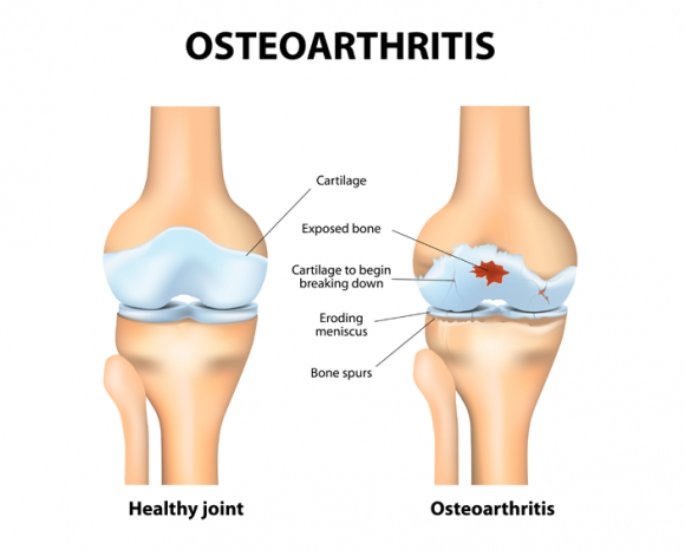

Osteoarthritis (OA) is also known as degenerative arthritis or degenerative joint disease.
With osteoarthritis, the cartilage (a rubber-like covering at the ends of each bone) breaks down. Consequently, the bones in a joint begin to rub against each other during movement, causing pain.
The severity of osteoarthritis symptoms can vary greatly from person to person, and between different affected joints.
For some, the symptoms can be mild and may come and go.
Whereas others can experience more severe and systematic symptoms, which make it difficult to carry out daily activities.
This form of arthritis can impact almost any joint, but the condition most often causes difficulties in the knees, hips and small joints of the hands.
Ava Bhat* a 48-year-old teacher in New Jersey, USA was diagnosed with OA in 2018. Her paternal grandmother also had OA.
“I remember when my gran was alive, we took care of her, and her osteoarthritis was debilitating.
“It meant from a young age I was extremely health-conscious. But I still got the damn thing.”
Ava has done her best to focus on the positives, seeing her grandmother go through the condition frightened her but also made her determined:
“The good thing was/is that fitness and wellbeing have always been key for me, it’s helped me manage things. I know I can’t do repetitive tasks too long like stirring when cooking or baking.
“Making small changes means I still feel I am living. There are days where I just cry but they’re few and far between.
“I know I’m lucky in that I can manage it, yoga and light exercise help me. I’ve met people who are entirely trapped by it.”
Arthritis is not just a physical health condition but one that can take a significant toll on a person’s mental health and wellbeing.
OA can cause acute pain that can be disabling. For some, there can be ways to manage the condition so that a person can continue to enjoy life.
Medical Intervention and OA
When OA occurs in the knees, some may consider knee replacement surgeries.
However, doctors have warned that knee replacement surgeries in osteoarthritis patients who are less than 40 years of age can do more harm than good.
Dr Shubhang Aggarwal, Senior Joint Replacement Surgeon, and Director, NHS Hospital, Jalandhar asserts:
“The need for knee replacement surgery in young arthritic patients who have degenerative changes in one compartment of the knee joint is overemphasized.
“Even though we do robotic surgery which gives a perfect alignment and ensures that the implants which are put in last up to 30 years.
“Still, it is advisable that in very young patients especially with osteoarthritis alternate methods of treatment even if they are surgical should be considered.”
There are no cures at present for any form of arthritis, but there are ways of managing symptoms and preventing most of the conditions from worsening.
Rheumatoid Arthritis
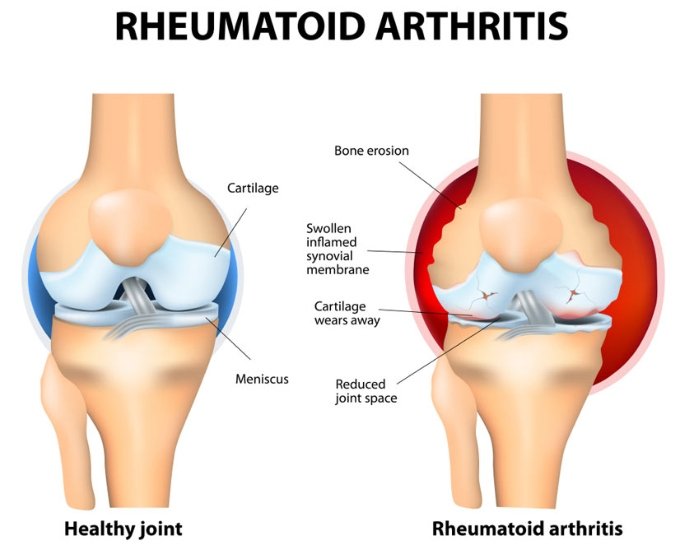

Rheumatoid arthritis (RA) can cause pain, swelling and stiffness in joints.
It can be one of the most painful types of arthritis, as it affects joints as well as other surrounding tissues, including organs.
RA is what is known as an auto-immune condition. Meaning that the immune system (the body’s natural self-defence system) gets confused and starts to attack the body’s healthy tissues.
With RA, the immune system causes unnecessary inflammation inside a joint or several joints.
This leads to problems, such as the joint becoming unstable and moving into unusual positions.
One of the difficulties is that since RA remains an invisible illness/disability there can be a lack of awareness of the support available and how to manage it.
University of Birmingham expert Dr Kanta Kumar maintains:
“Many South Asian patients with RA have limited relevant information about how to effectively manage their condition.
“It’s important to make health services more visible, relevant and accessible to those who need it most.”
“Particularly those people who, for reasons of language, culture or health literacy skills may be less able to negotiate about their healthcare needs or successfully navigate the health system.”
Maya Khan* a 52-year-old Pakistani woman from Edinburgh has lived with rheumatoid arthritis for eleven years.
After her diagnosis, Maya became aware that many women from older generations of her family in the UK and Pakistan had a form of arthritis.
However, they were not all formally diagnosed and none mentioned it to Maya until she told them about her diagnosis.
“I’m so glad that I went to the doctors as soon as I felt things were getting odd and didn’t shrug it off.
“Once I was diagnosed and started to do more research I started to see things more clearly.
“A lot of my older relatives were doing things or not that made me pause, so I nudged them to go to the doctor.
“Turned out they had some form of arthritis, but they didn’t see the point of going to the doctors and just carried on.
“And others were diagnosed but like with menopause and other things, they didn’t talk about it to us.”
In the modern world, physical health and wellbeing are given more attention.
However, there is still a heavy degree of silence when it comes to some biological and bodily conditions like menopause and arthritis.
Inter-generational conversations within Desi communities, and more broadly, are needed – such conversations are vital.
Conditions like arthritis need to be discussed openly so that even those not diagnosed are aware and understand the condition. Thus facilitating safe spaces of inclusion for those with such hidden disabilities/illnesses.
Socio-Cultural Norms & Assumptions have an Impact
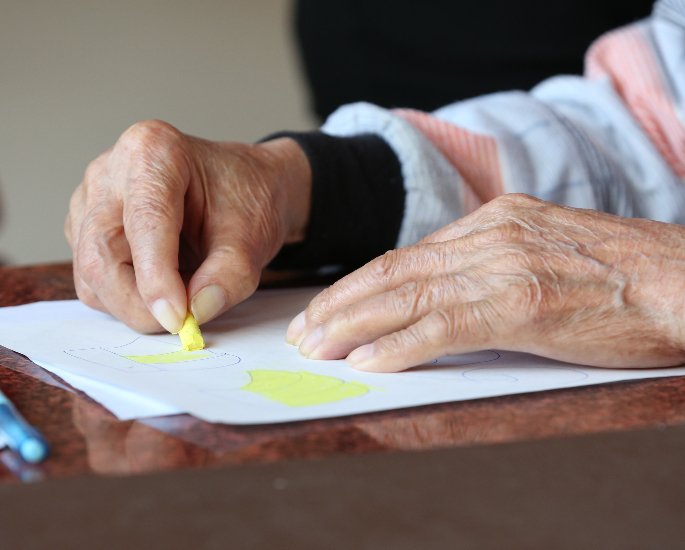

Within South Asian communities within South Asia and the diaspora, the idea of just carrying on still dominates.
This attitude is significant when it comes to how Desi women think they should deal with and engage with a condition such as arthritis.
Moreover, there is also a lack of awareness of the ramifications of arthritis and the impact it can have on a person’s life.
Fatima Akhtar* a 25-year-old Birmingham based Pakistani, was 23 when she was diagnosed with rheumatoid arthritis.
She found family members were at times disbelieving when she stated she had arthritis.
“Past and present I’ve had family and others looking at me in disbelief. I’ve felt totally out of place, like an oddball because of my condition.
“Some have been like ‘Nah you’re too young for that, are you sure you heard the doctor right?’ Or they’re like ‘you’re making a big deal out of nothing, I’m sure it’s not so bad’, I used to cry because it used to frustrate me so much.
“It still does but now I embrace what Ammi (mum) says and focus on me and managing my health the best I can. Ammi has my back and has helped massively.”
For Fatima, the shock of her diagnosis and learning to manage it was made difficult by the lack of awareness and understanding of it from those within her family.
The lack of understanding and awareness she was forced to confront heightened the emotional turmoil and uncertainty she was experiencing.
The stereotypical image of arthritis as an old people’s health issue needs to be dismantled within Desi communities and more broadly.
This is key to shifting how experiences of arthritis especially at the onset of diagnosis and management.
Fatima went on to state:
“I was petrified when the doctor first told me, I thought that’s it everything was going to hell. I thought uni, travelling, marriage was all gone.
“Until the doctor and Ammi showed me that people have been able to manage it well and live properly I was living a panic-driven nightmare. I knew nothing at the start.”
Invisible illnesses/disabilities such as arthritis require greater discussion across communities and age groups.
Until such discussions become mainstream and normalised, stereotypes, misinformation and a lack of awareness will continue.
Sukhjeen Kaur from Kidderminster was unexpectedly diagnosed with rheumatoid arthritis at 21. She had to put her studies at Derby University on hold as she learnt to deal with her new reality.
Sukhjeen in her conversation with ITV News maintained that her immediate family have been very supportive.
Yet the reaction from others in the South Asian community, particularly among the older generation, has been difficult:
“With the extended family, it was harder to get through to them that I was a young person living with arthritis.
“They weren’t as quick to be supportive about it.”
Sukhjeen’s experiences led to her starting an Instagram page and non-profit called Chronically Brown talking about the struggles of chronic illness.
The Instagram page enables South Asians to share their struggles of explaining to others their disability/illness and the attitudes of others in the Desi community.
She also runs workshops, especially with those from older generations. Such workshops help to dismantle stereotypes and negative judgements encompassing disabilities/chronic illnesses.
Women’s Roles & Expectations of “Just Carrying On”
In South Asian communities, resilience and determination are key characteristics.
Such characteristics are valuable however when it comes to hidden illnesses/disabilities like arthritis ideas of resilience can be problematic.
Today, Desi women are still expected to maintain a role that comprises a dutiful daughter/wife/daughter-in-law, and a loving mother.
Indeed, the needs of the family supersede that of the individual, hence a woman’s health can be prioritised below that of taking care of the family.
As a result, some women may feel that they are unable to take time out when they feel unwell. When their symptoms “flare-up” and cause excruciating pain, ideas such as “get on with it” can dominate.
Ruby Shah* a 55-year-old Bangladeshi single mum in Birmingham, UK feels there is no choice but to “suck it up and carry on”:
“As a Asian woman you have no choice but suck it up and get on with it.”
“Even when it’s something that would have most on the ground you suck it up.
“Things are changing a bit now, but that remains true. And if I didn’t do things who would?
“My ex and his side of the family have been waiting for me to fail in some way. So for my kids and myself even when the pain has been enough to make me sick I’ve had to suck it up.”
For Ruby, there was no alternative but to grit her teeth over the years when her arthritis and other conditions “flared up”.
Ruby feels just like with the period, menopause and pregnancy, there is a sense of expectation that women will just carry on.
This idea of “sucking it up” and ‘just carrying on’ is aided by the fact that much of what happens biologically to the body is positioned as problematic and is concealed. This is particularly true for women and Desi women at that.
That being said, Ruby points out that over the years her adult daughters and sisters have been invaluable in helping her find medicinal and herbal solutions to managing her arthritis and other conditions.
Thus, as the years have progressed, her experiences of arthritis have improved and have not been as strongly marked by pain and negativity.
Informal Knowledge Sharing within Desi Communities
Within Desi communities, there are transnational streams of formal and informal knowledge exchange and support.
Thus, there is an enclave of Desi women who hold and transmit knowledge and advice about how to manage conditions like arthritis and their consequences.
These enclaves hold generations of knowledge, create connections between generations, and keep Asian heritage alive.
Maya Khan* highlighted that the knowledge shared by family members within Pakistan has greatly helped her in managing her rheumatoid arthritis
“I’d heard horror stories about some of the things people have done, like the steroid injections. I was very wary of doing anything like that.
“I focused on herbal and natural treatments and my family back home helped.
“There’s a drink made from soaking specific sticks and leaves from a plant that helps with easing pain. My uncles and brother-in-law always bring me back enough for a year or so.”
Similarly, Ruby Shah* takes painkillers when the pain is too severe but maintains that herbal concoctions and exercise significantly help her:
“Light exercise every day has helped me for years.
‘I also shifted my diet. I make sure I drink a lot of water, I have multiple herbal teas for different things.
“My girls are great at looking for natural things that can help. They even found me a massage oil that when massaged in, helps with discomfort after a long walk or if I’ve stood too long.
“These are things I have shared with friends and family who have health issues like me. They do the same, recently one friend told me to eat aloe vera or drink it. Anything I do I update my doctor.”
Informal modes of sharing appear to be a significant part of women’s lives as they manage health conditions like arthritis.
When speaking to Ruby, it became clear that she was somewhat wary of the medical recommendations her doctor and pain management physiotherapist made. Particularly when it involved surgical intervention or the injection of steroids.
There is a need for the informal and formal to merge when it comes to knowledge and advice about managing arthritis.
Ingredients in the South Asian Diet & Cuisine
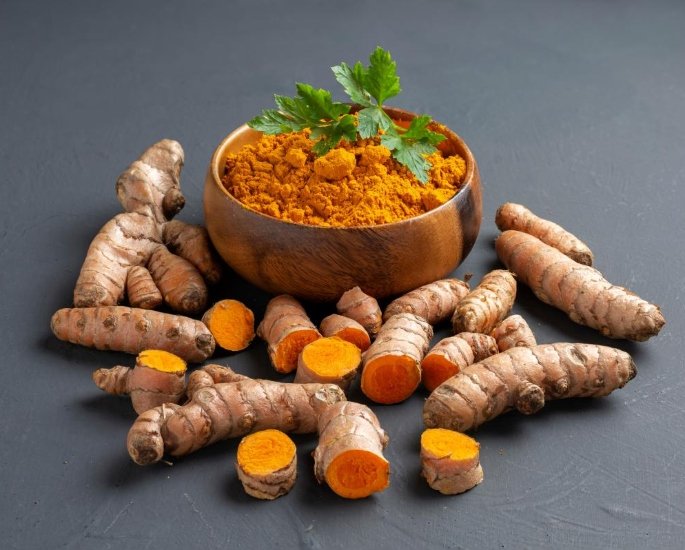

Furthermore, there are samples of the South Asian diet and cuisine that are valuable in managing the symptoms of arthritis and other conditions.
For example, turmeric (Curcuma Longa) is a frequently used spice in South Asian foods. It also has a long history of use in Ayurvedic medicine.
Research published in the US National Library of Medicine National Institutes of Health found that the active compound in turmeric, called curcumin, was effective in reducing pain in patients with osteoarthritis.
Multiple studies have shown that turmeric can reduce inflammation.
However, it is important such things as turmeric for medicinal purposes are taken with the advice of doctors.
In a 2013 study, a mixture of blended ginger and turmeric were given to the adjuvant-induced arthritic rats.
Findings of the study suggest that the mixture may be “effective against RA severity and complications”.
As with any alternative therapy, it is important to speak to a doctor before using turmeric or anything else to treat any health condition.
Treatments for arthritis aims to control pain, minimise joint damage, and improve or maintain function and quality of life.
A range of medications and lifestyle strategies can help achieve this and protect joints from further damage.
Experiences need to be Shared
The Desi women who shared their experiences in this article made it clear that change needs to occur.
There is a need for experiences and knowledge, around arthritis, to be shared inter-generationally, transnationally and cross-culturally.
In the words of Simran Jha* a 38-year-old Indian postgraduate student in Dehli who has arthritis:
“I strongly feel more needs to be said between women, groups and society when it comes to how to deal with all this.”
“Whether it’s arthritis, menopause or something else, we shouldn’t wait until we are forced to experience them to have the conversations or be included in conversations.”
Arthritis is a chronic condition that impacts millions across the globe, including Desi women.
Socio-cultural norms and expectations often mean that Desi women try to “just carry on” without talking about conditions and their impact. Although this is shifting, especially through social media platforms.
Overall, there is still a need to destigmatise and widen understandings of invisible illnesses like arthritis within Desi communities.